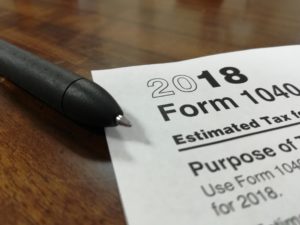
Congratulations! Your company is established and thriving.
After the years of building your business, it is now providing distributions as a fruit of your investment. This money is in addition to your salary. Because you have set a reasonable compensation plan as well, your business is creating ROI on your labor, meaning the owner (you) is profiting on the employees’ labor.
Chances are good, now you will need to pay quarterly estimated taxes.
The federal income tax is a pay-as-you-go tax, meaning the IRS wants the money you earn throughout the year as you earn it. The two primary ways of giving the government (federal and state) your income tax is through withholding on your paycheck and/or paying estimated tax.
A Brief Overview of Withholding Taxes
As the U.S. has evolved in the past couple hundred years, we’ve shifted from business owners and small farms and employers and employees. As businesses owners, taxes were (and are) more difficult to track and collect. In contrast, employees earn the same amount of money in a regular pay cycle so siphoning off some the taxes of the paycheck on a regular time frame was a brilliant way to improve the cash flow of the US government.
So, in the middle of World War II, looking for a way to pay for the war (and not letting a good crisis go to waste), the US Congress implemented a slick mechanism known as the Current Tax Payment Act of 1943. This made withholding income taxes from paychecks universal. The act compelled employers to withhold and remit their employees’ income tax obligations directly to the IRS.
Because of this act, your income tax is withheld and sent to the IRS (and state) as you receive your paycheck. This is established when you sign up with your employer and fill out your exemptions (form W-4). A W-4 a rough guess of how much should be withheld from your paycheck to cover your tax liability. (Filling out a W-4 is not a way to estimate your tax liability.)
Withholding income taxes may be adequate for most wage earners, but as a business owner, your wage becomes a relatively less significant percentage of your total income. The amount withheld on your paycheck likely won’t be enough to pay your tax bill.
“How much tax do I have to pay?”, you ask.
All of it.
Determining how much tax needs to be sent in is a service your CPA offers because so many other factors impact this number.
Two Options For Estimating Taxes
There are two options for tax planning here:
- Pay the entire year’s tax obligations, or
- Pay the minimum amount to not receive a penalty.
The first method requires estimating the year’s tax obligations and dividing by four. Theoretically possible but quite challenging to put into practice.
That is why there’s another way.
The second is known as a “safe harbor” amount. This is a minimum amount paid throughout the year to avoid penalties. The safe harbor number is 100% of last year’s tax or 90% of current year’s tax. (If your income is above $150k, it needs to be 110% of prior year’s tax.) The safe harbor used by many is just to avoid penalties.
Either way, depending on the profitability of your company or prior year’s taxes, you may over or undershoot your tax liability. Any shortage in prior year’s tax is still due by April 15th following the calendar year-end.
(Oh, and don’t confuse the April 15th date for estimated payments with the prior year tax “settle up”. It is the same due date but for different tax years.)
As a pay-as-you-go system, the amounts are estimated and sent in on the four quarterly dates: April 15, June 15, September 15 and January 15. (You’ll wind up with a penalty by not sending in enough quarterly tax as well.)
Estimated taxes are the preferred method of paying taxes for those who, for one reason or another, will not be able to satisfy their income tax obligations with the IRS to avoid a penalty through their payroll withholding tax.
This number will grow as well as your business grows and becomes more profitable.
Taking time to calculate your numbers or paying your CPA to do it will produce a return on investment as you avoid a costly and unnecessary underpayment penalty.
